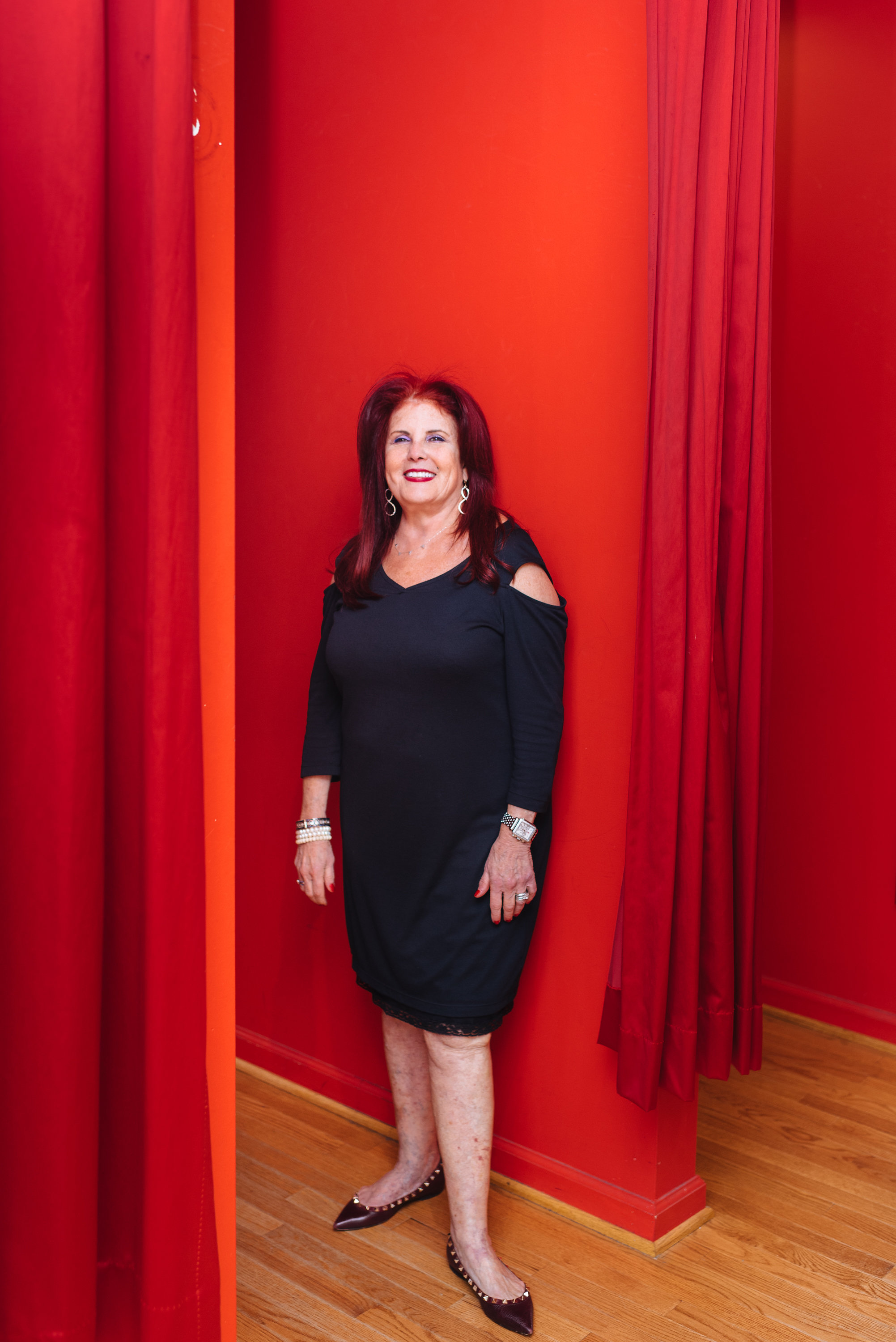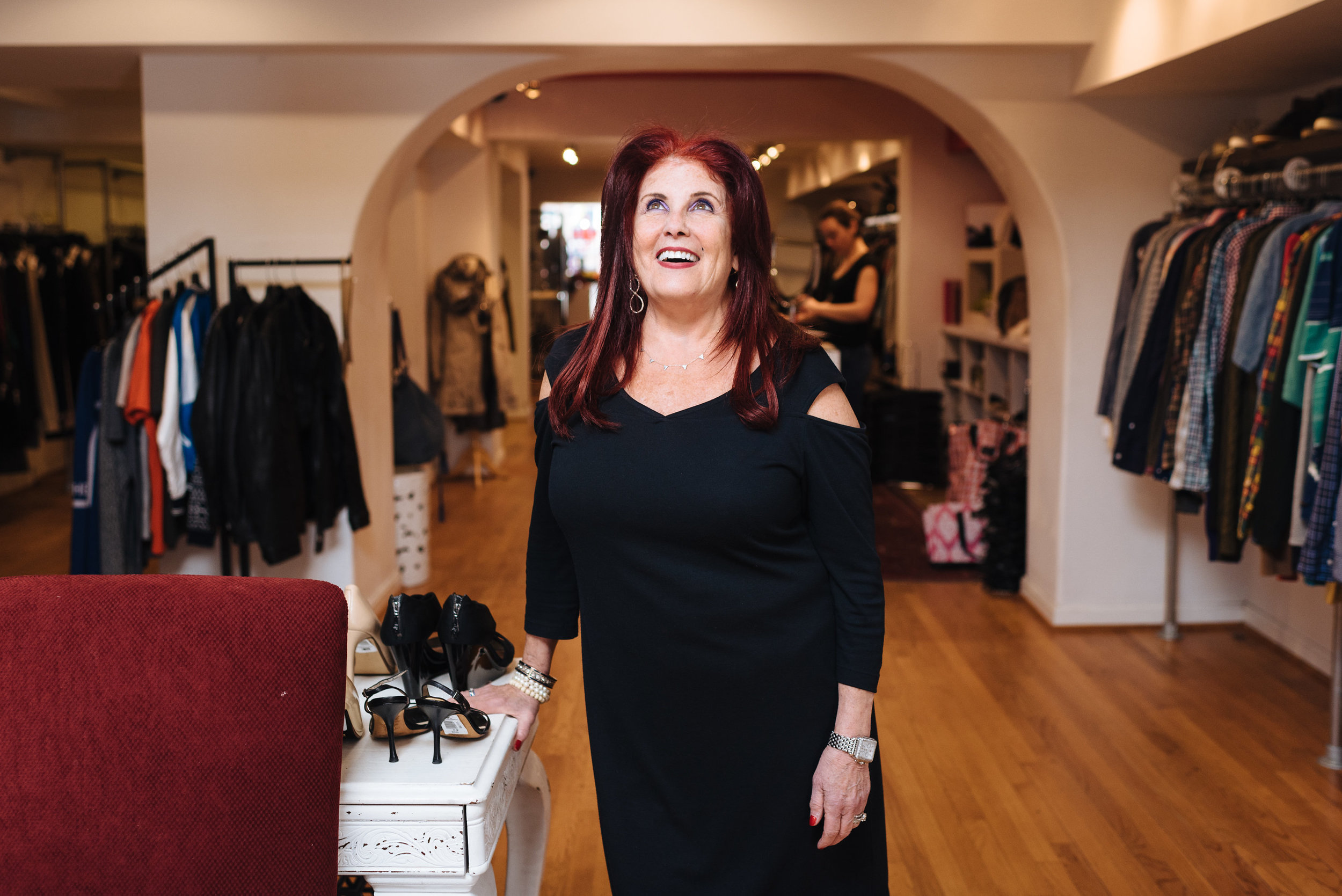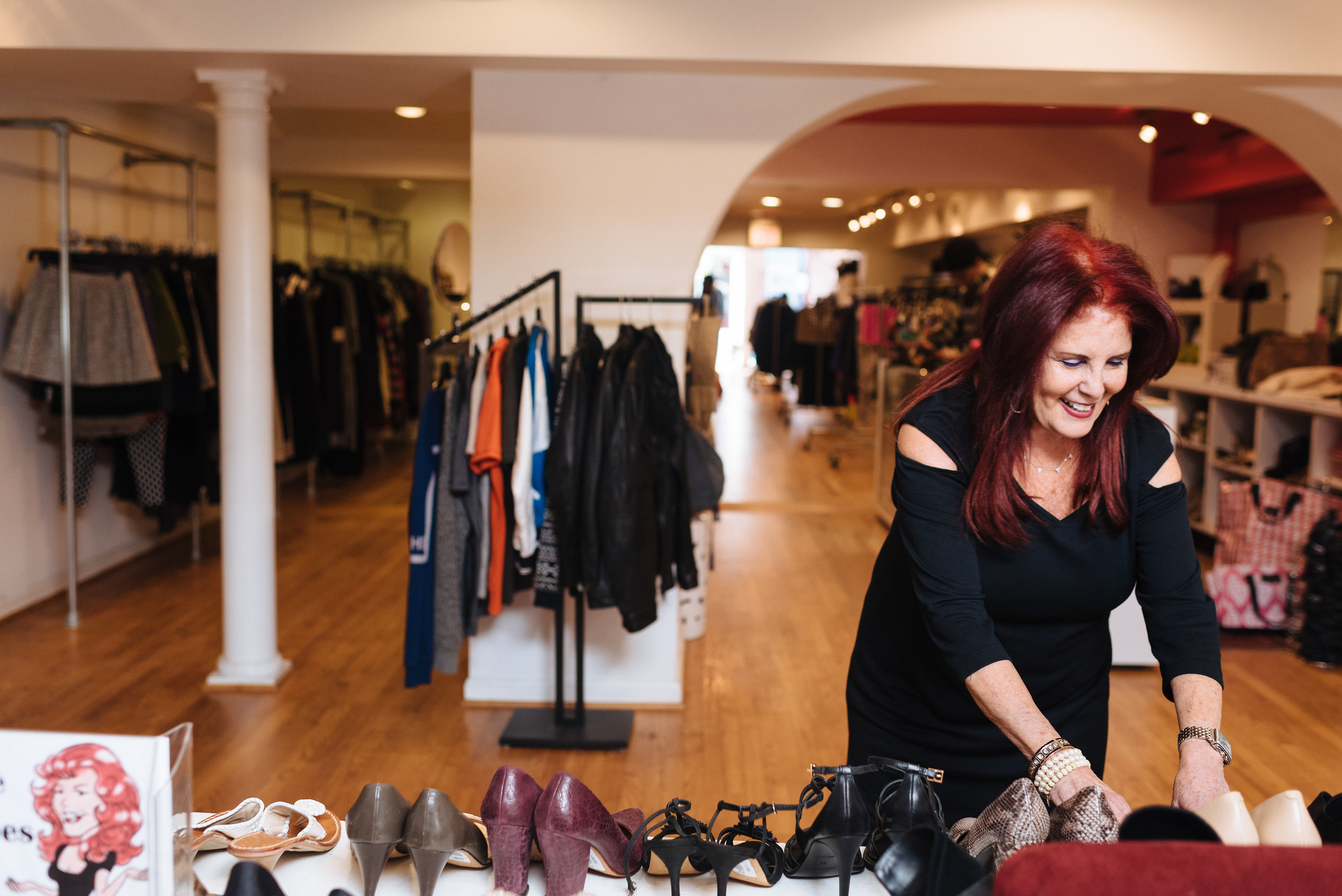‘I Was Definitely A Bit of a Wild Child’
At a dinner party one night, Wendy Ezrailson sat next to some guy she didn’t know. He was nice, and they talked the entire evening—but she never caught his name.
‘Later on this girl said, ‘Wow, you got to sit next to T.I.!’ ‘I went, ‘Oh, is that who that was?’’
As the co-owner and buyer of two Georgetown retail institutions before opening consignment shop Reddz Trading—named after her signature hair color—Wendy has been sharing the room with celebrities and fashion icons for decades.
She grew up in Wilmington, Delaware, the daughter of a fashionista who insisted they travel to New York or Philadelphia to do all of their shopping.
‘My mother wore these platform shoes in the 60s and a woman asked if they were orthopedic. She was just that ahead of her time.’
In the 70s, Wendy and her husband, Izzy, opened Up Against the Wall, a hippy clothing store on M Street that took its name to heart—all of the merchandise hanging from the walls. She was teaching at the time, but six years into the business, Wendy knew her heart was with fashion.
‘I came home from work one day and I said to my husband, ‘I gave my notice for next year. I’m gonna be a buyer for Up Against The Wall.’ He said we didn’t need a buyer but I said no, I’m gonna do it.’
Wendy began making trips to New York, visiting showrooms to see the designer lines and select what would sell in Georgetown.
‘Back then, there weren’t a million lines like there are today, but there were so many more showrooms. It was kind of fun; you’d look at clothes all day and go out to dinner.’
The Ezrailsons opened a second Georgetown store called Commander Salamander, and Wendy became the head buyer. Now running two of very few ‘hippy’ stores in DC at the time, the Ezrailsons couldn't restock fast enough.
‘Up Against the Wall—and then Commander Salamander—was sort of the forefront of cool stores. There were maybe 20 of us around the country that were all friends and had the cool stores in different cities. A lot of celebrities started doing lines, and you’d meet them and they’d be happy you were doing so much business with their line, and you sort of got entrenched with them.’
As Wendy began running in celebrity circles, her personal style landed her in all the major magazines and newspapers.
‘I was definitely a bit of a wild child. I always had a different color hair. Pink hair, yellow hair, blue hair. I would bleach my hair blond and just do a color. I wore things that didn’t match. It was really cool.’
Wendy was on the fringe, and so were her stores. Andy Warhol became a regular at Commander Salamander, where Wendy hosted a signing for the debut of his Interview Magazine.
‘We had a big sign outside that said come in and see Andy. You have no idea how many people had no clue who he was. But I have a picture of him signing my magazine. He was very cool, very weird.’
Cher was another loyal customer, and as the business expanded, Wendy began working with another famous singer—buying 500 pairs of Beyoncé’s Deréon jeans every week. Unlike Andy, everyone knew that name.
‘I became friends with her father, Mathew Knowles, and they invited me to the Hollywood Walk of Fame when Beyoncé got her star. They even gave me my own star with my name on it. They would invite us to parties, and we’d sit and talk to Beyoncé and Jay Z and Sean John. It was really very fun.’
But by 2009, retail was shifting and both Up Against the Wall and Commander Salamander closed. Wendy wasn’t ready to retire, so she called a friend who owned a resale store in Pittsburgh. She’d never stepped foot in one before, but wanted to pick his brain. Fortuitously, Wendy’s friend said he’d always wanted to open a store in DC. The two became partners, and in 2010, opened Reddz Trading in Bethesda. In 2013, a second store opened in Georgetown.
‘My background made it so easy to buy consignment because I knew clothing lines that most people hadn’t even heard of. I was familiar with all of it.’
Locals comprise a high percentage of Wendy’s consignment business, from college students selling their clothes to elderly women returning day after day—afraid they’ll otherwise miss something new that just came into the store. Though there are some exceptions, Reddz generally uses a basic resale formula—charging 1/3 the price of what the clothing or bags originally cost. The only new inventory in the store is the jewelry.
‘Every once in a while someone is offended you didn’t take their clothes, or didn’t offer more for them, but we buy what we know we can sell. Sometimes people come in with blouses that have huge shoulder pads in them that you know are from the 80s. We can’t take them, but they’re perfect for vintage stores.’
What does sell, without exception, is Gucci, Chanel, and Louis Vuitton bags.
‘Everyone’s looking for a Louis Vuitton bag, no matter what. When we get a great bag, we’ll use Instagram. The minute we post a picture of it, the phone is ringing like crazy. We’ll have a line on the phone of people who want the bag. If I’d known about these shops a long time ago, I would have saved my husband a lot of money. I bought everything at retail!’
Wendy laughs, leaning back in her chair. She’s wearing all black, her daily look now. It’s a stark contrast to her Andy Warhol days, and everything matches.
Everything except her hair.






